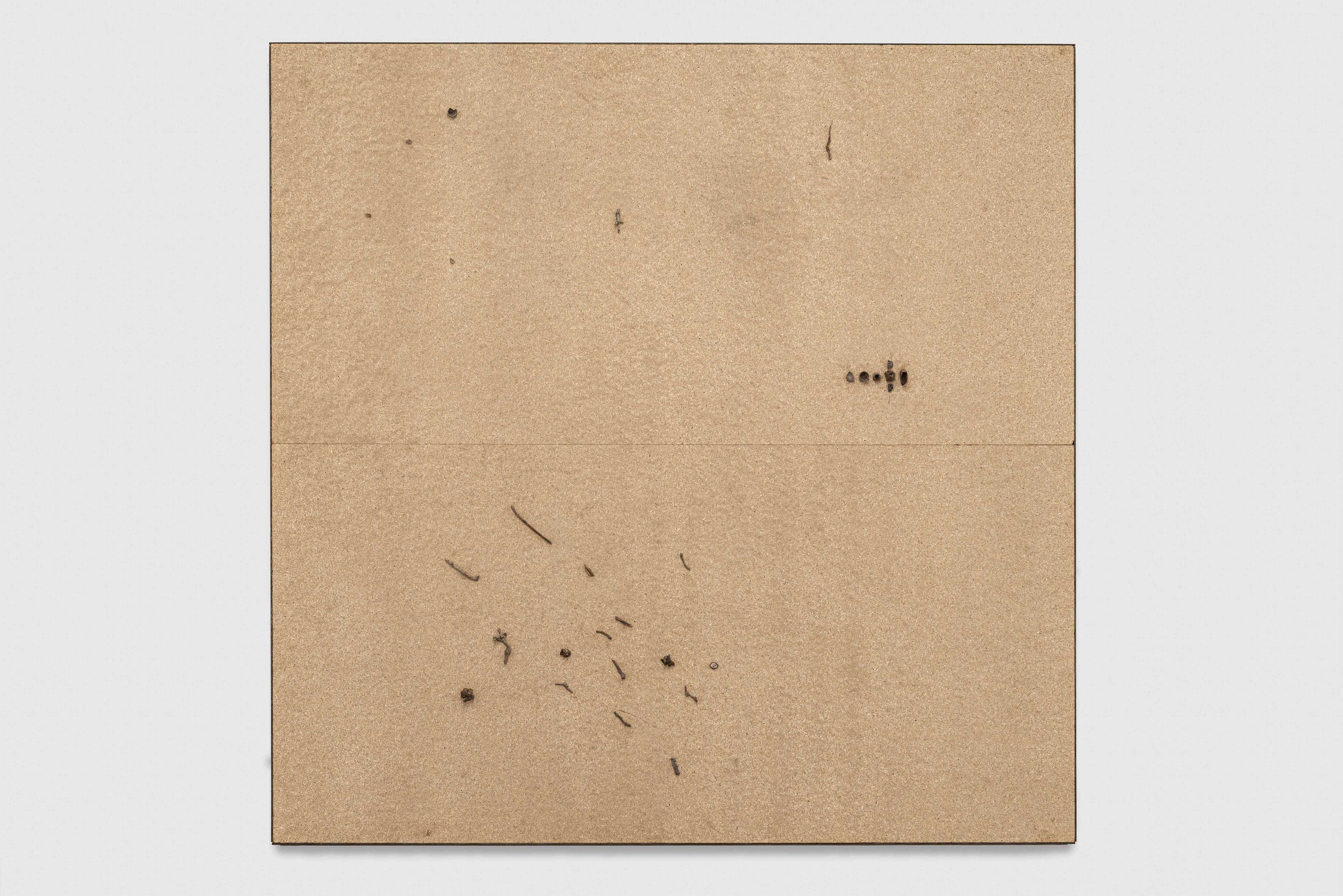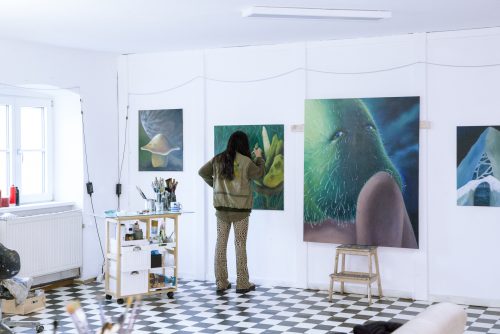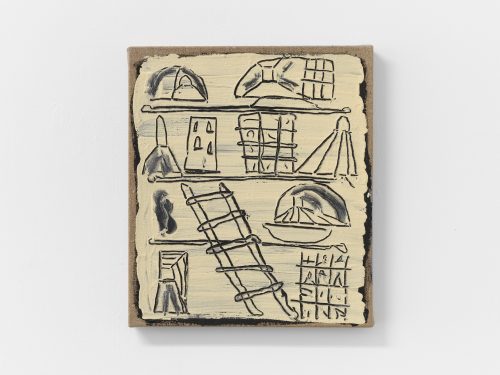
Edoardo Rito
Muriella

Installation view, Muriella, Edoardo Rito, Santi, London. Photo: Gillies Adamson Semple
Advertisement

Edoardo Rito, Sunset 1 (top), Sunset 2 (bottom), 2025. Paper, Perspex, and steel nails on joined MDF boards. Photo: Gillies Adamson Semple

Installation view, Muriella, Edoardo Rito, Santi, London. Photo: Gillies Adamson Semple

Installation view, Muriella, Edoardo Rito, Santi, London. Photo: Gillies Adamson Semple

Installation view, Muriella, Edoardo Rito, Santi, London. Photo: Gillies Adamson Semple

Installation view, Muriella, Edoardo Rito, Santi, London. Photo: Gillies Adamson Semple

Installation view, Muriella, Edoardo Rito, Santi, London. Photo: Gillies Adamson Semple

Installation view, Muriella, Edoardo Rito, Santi, London. Photo: Gillies Adamson Semple

Installation view, Muriella, Edoardo Rito, Santi, London. Photo: Gillies Adamson Semple

Installation view, Muriella, Edoardo Rito, Santi, London. Photo: Gillies Adamson Semple

Edoardo Rito, Screw Boxes, 2025. Cardboard boxes, cement powder and wood. Photo: Gillies Adamson Semple

Edoardo Rito, Silt Unit 1, 2025. Found objects on joined chipboards. Photo: Gillies Adamson Semple

Detail, Edoardo Rito, Silt Unit 1, 2025. Found objects on joined chipboards. Photo: Gillies Adamson Semple

Edoardo Rito, Silt Unit 2, 2025. Found objects on joined chipboards. Photo: Gillies Adamson Semple

Detail, Edoardo Rito, Silt Unit 2, 2025. Found objects on joined chipboards. Photo: Gillies Adamson Semple

Edoardo Rito, Silt Unit 3, 2025. Found objects on joined chipboards. Photo: Gillies Adamson Semple

Detail, Edoardo Rito, Silt Unit 3, 2025. Found objects on joined chipboards. Photo: Gillies Adamson Semple

Edoardo Rito, Silt Unit 4, 2025. Found objects on joined chipboards. Photo: Gillies Adamson Semple

Detail, Edoardo Rito, Silt Unit 4, 2025. Found objects on joined chipboards. Photo: Gillies Adamson Semple
The places we have known do not only belong to the world of space on which we map them for our own convenience. – Marcel Proust, Swann’s Way (1913)
Methodologically, excavation is tactile and visual. Fingers, tools, dig into the ground, gently brush away the excess; the exposition of an object as it becomes vulnerable to the glow of a torch, to a searching pair of eyes. Anachronism materialised through sight and touch.
The ‘found object’ is the simultaneous description and result of such a process: a present descriptor just as it is an active verb rooted in the past. A physical material, contextualised, even revitalised, by its circumstances of display, and the description of that material’s past discovery: its ‘foundness.’ A decaying space is revitalised as it is found. Its crumbling walls, floors littered with detritus, its architecture are concretised in the act of its spontaneous exposition. The movement of a body through its space imbues it with a newfound vitality—a dangerous one, possibly, as the function of its architecture has eroded through time. In this way the body moving through this structure is beholden to the physicality of its decay; forgotten are the social standards of a body in architectural space, the normative uses of a staircase or a doorway or a window, when these structures no longer serve a functional purpose. The engagement between body and space is entirely unique to the transitory moment of its discovery.
The process of seeking out is one that births its own significance, where what is found comes from the very act of looking. We do not necessarily have a singular object in mind when seeking out; in other words, looking does not necessarily mean looking for something. As we explore a space, an idea, a story, so it becomes imbued with meaning through the very act of exploration, through the relationship between the body and the space it occupies, the materials with which it comes into contact. There is meaning in the movement of material, and in our movement through and with such material.
There is a playfulness, too, in finding things and in remaking them, as novelty springs out of age, and as the process of discovery is unpredictable, lacking the structure of utility. In the face of an archaeological unknown, the instinct is to pose questions and to set out answering the questions. This is a process set in motion, actively, as one gets older, but in youth the process is innate, the excitement of its discoveries spilling out almost involuntarily from a pregnant mind. And as we return to its discoveries in age, the ‘slumbering songs’ of youth are revived, awakened. We follow the same steps that were once brand new, and this becomes like a remade discovery, the first of its kind even as it recycles aspects of the original.
Sense-making processes of typological order flounder in the face of the amorphous, non-linear experience of perception. Yet we continue to align certain memories, construct certain images, remake things, and in so doing we continually discover and rediscover that which we’ve found before. Here, these objects are found in quite a literal sense and displayed through their processes of making-sense; put together, so to speak, in a variably ordered and disordered fashion that recalls both the information-based process of archaeological excavation and the sensory, cerebral process of involuntary memory. In engaging with the material, with wood, marble, text, glass, in moving through and with that which is base, profane, and earthly—what do we find?
Marina Seyffert




